Pagan Religions of the Roman Empire
Mike Ervin
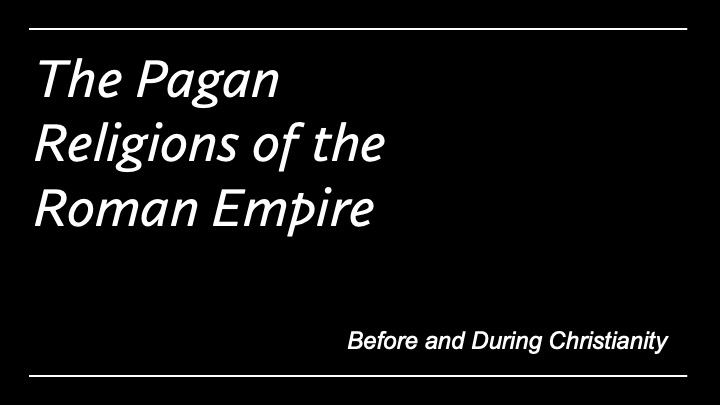
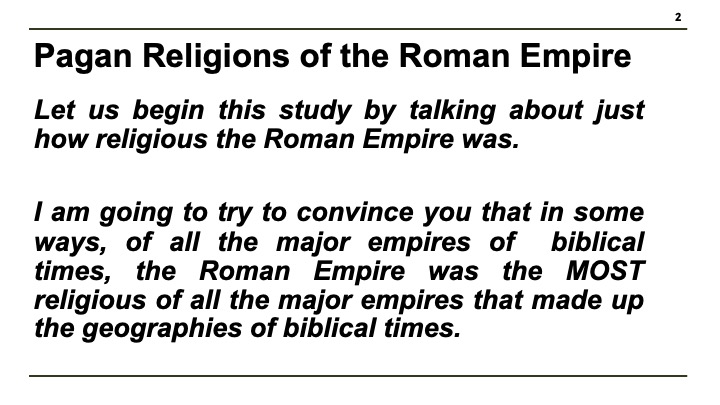
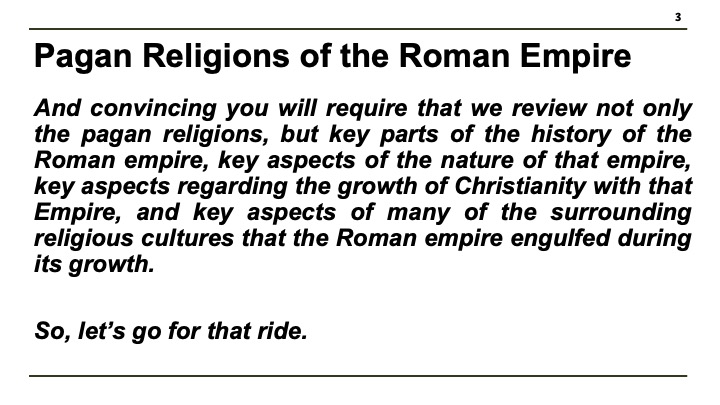
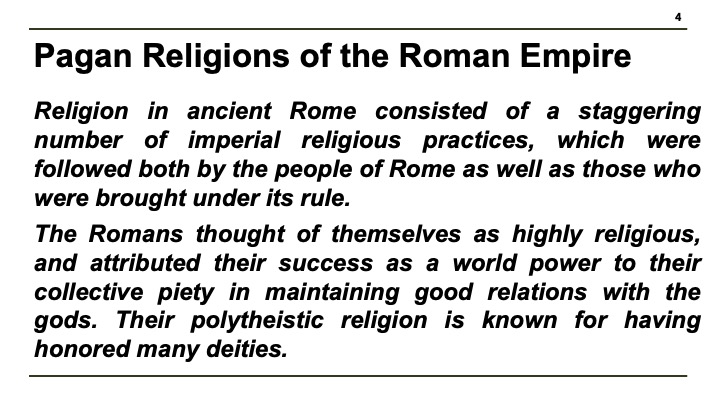
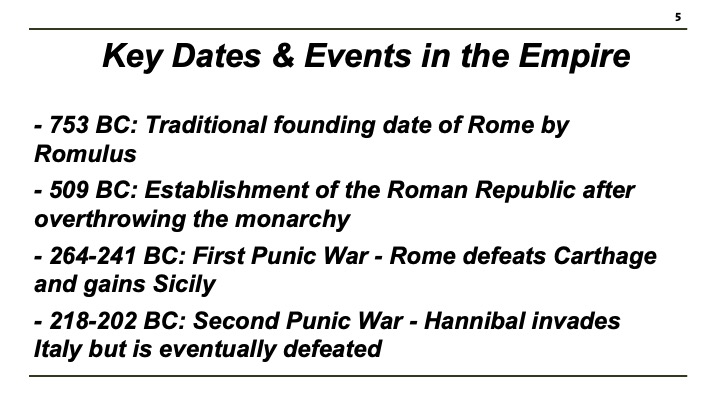
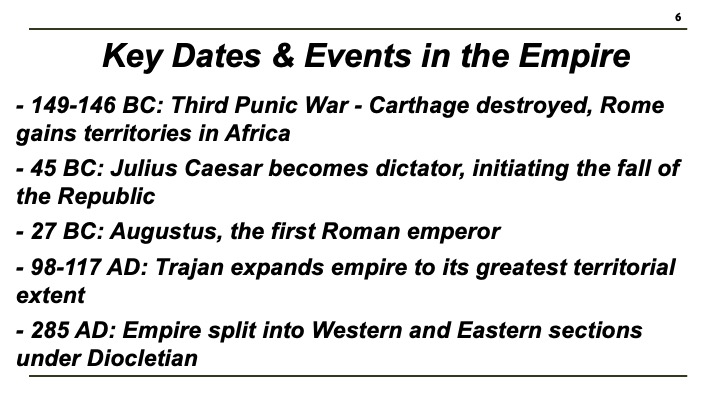
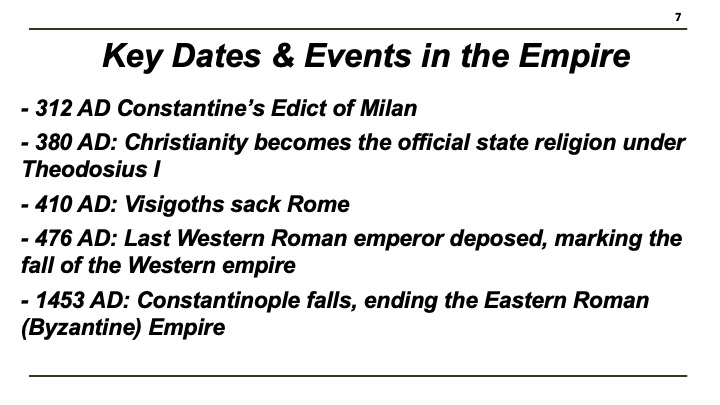
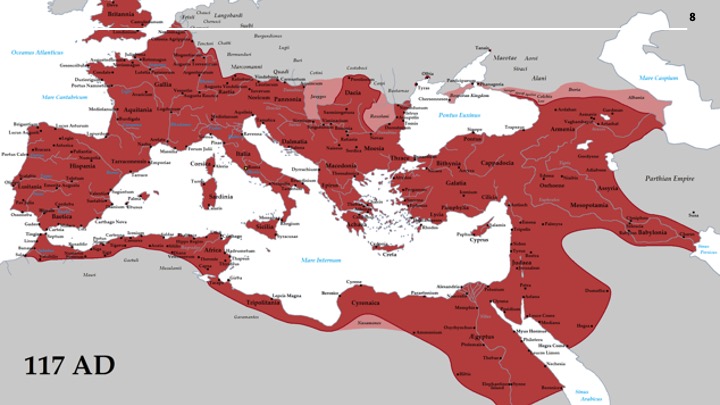
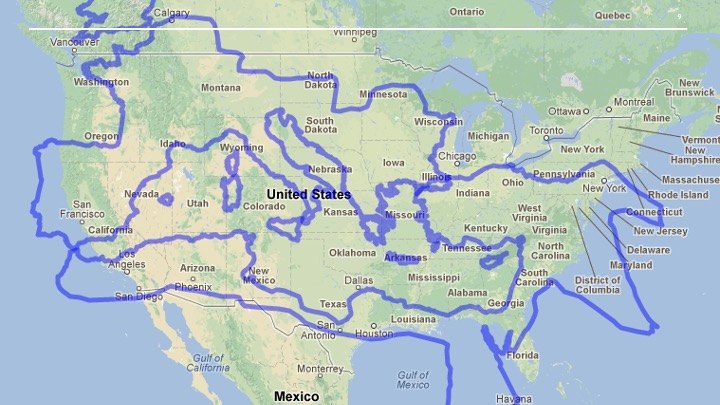
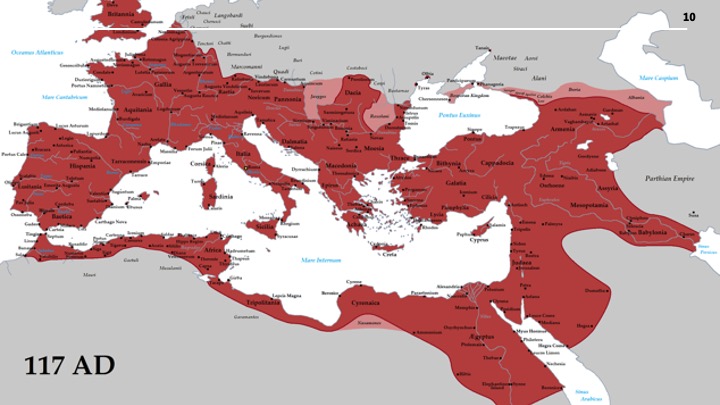

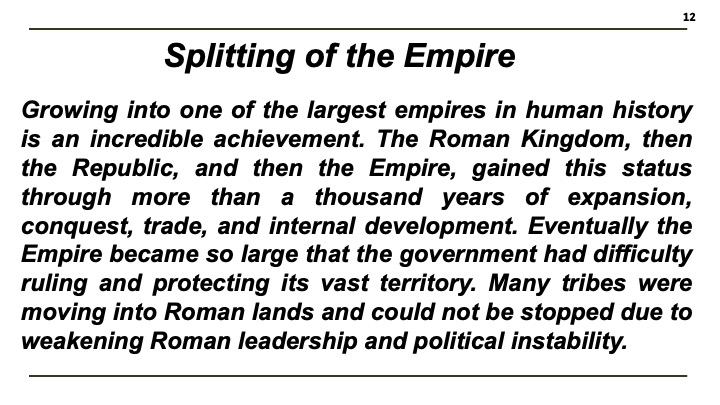
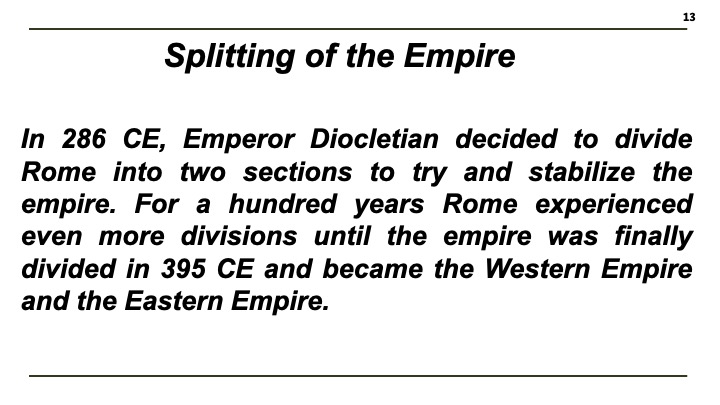
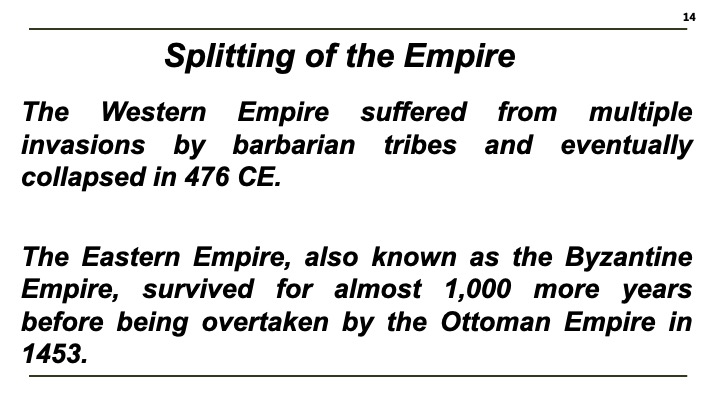
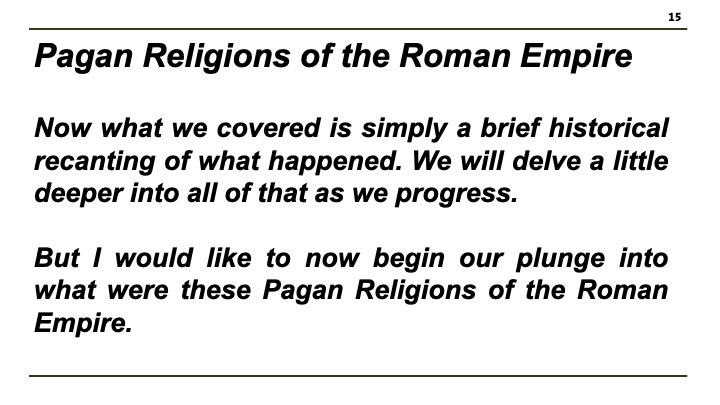
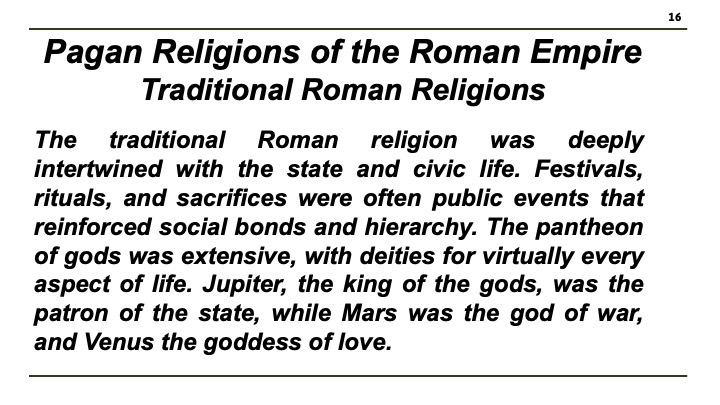
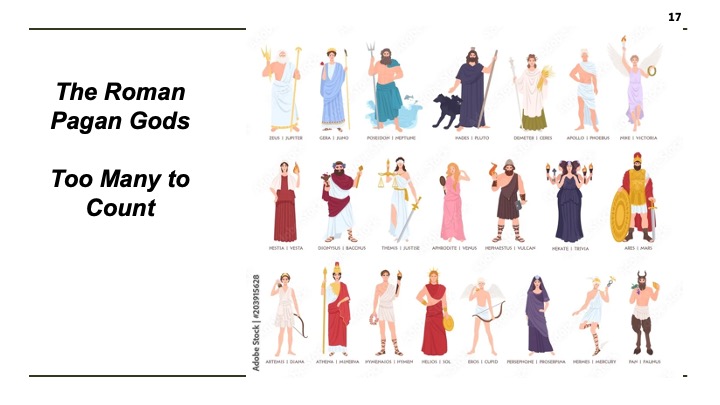
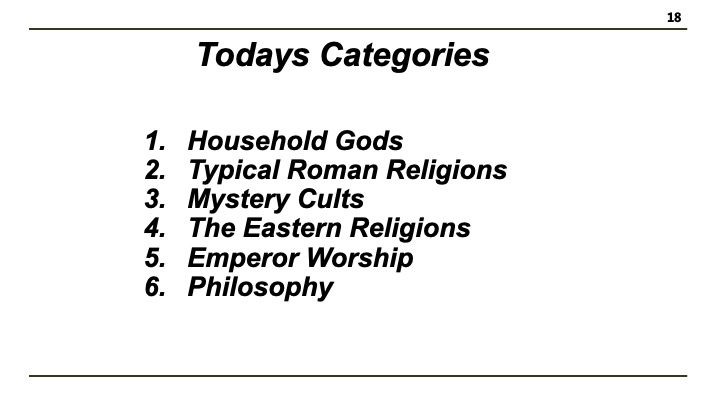
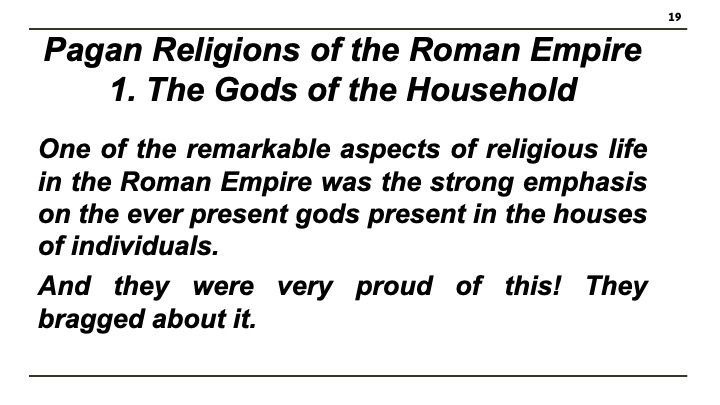
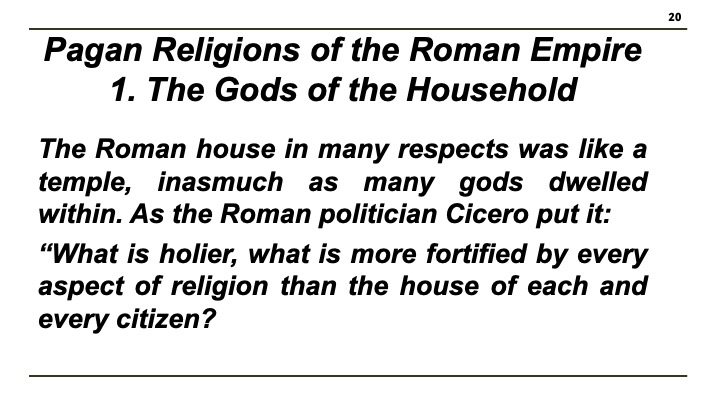
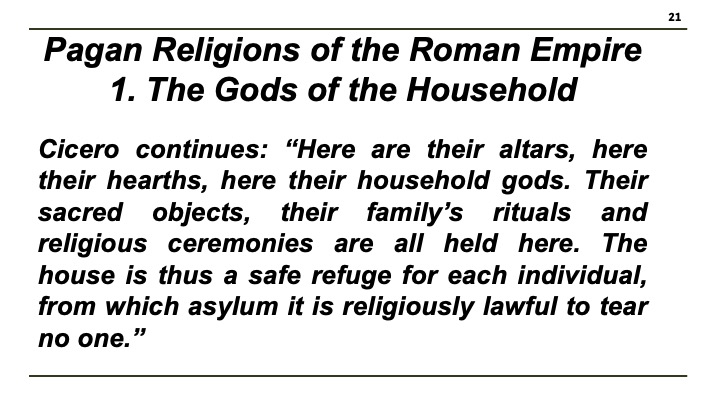
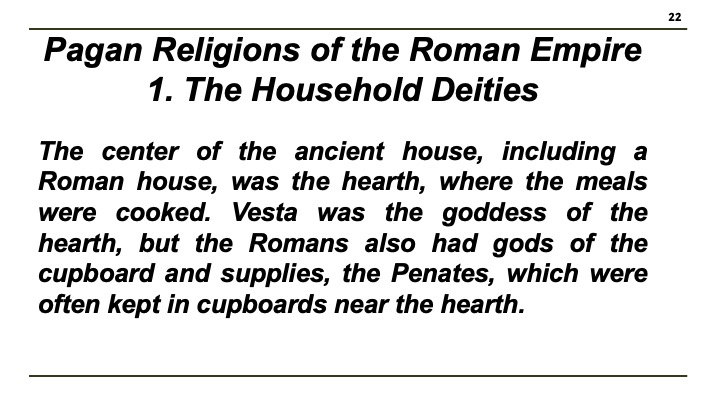
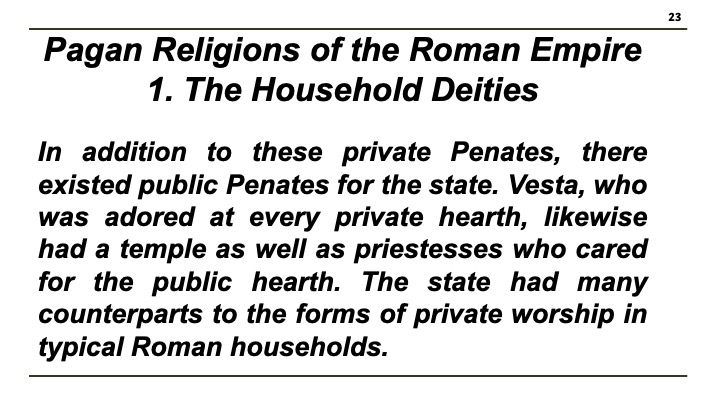
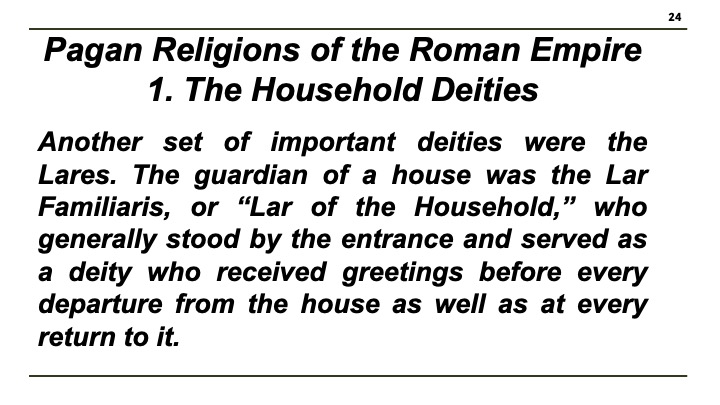
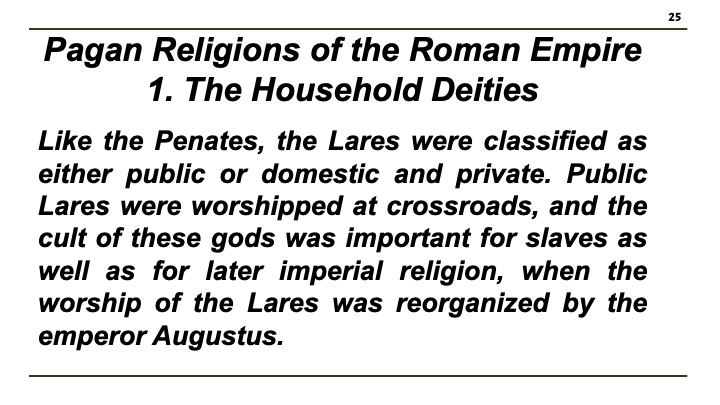
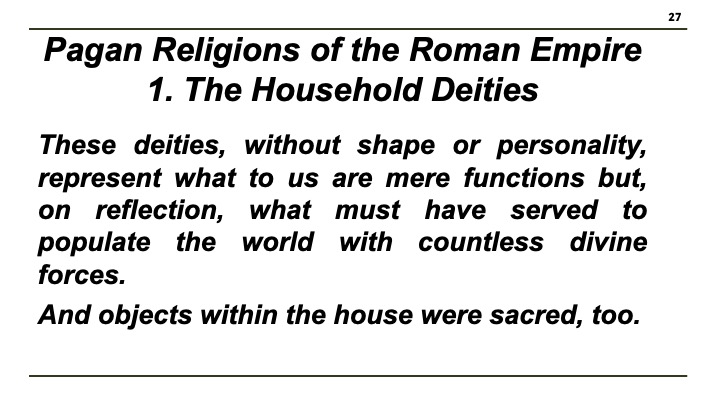
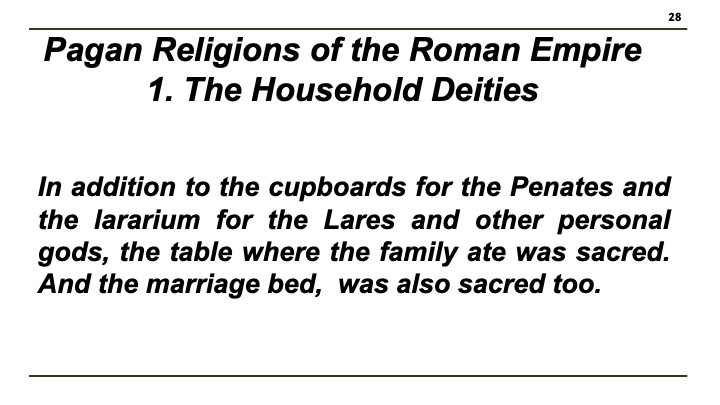
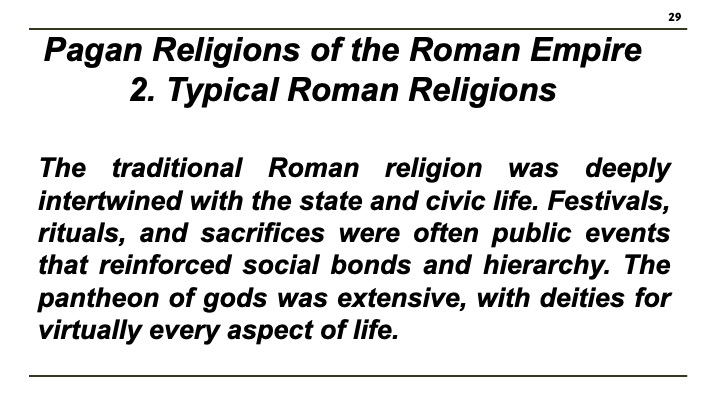
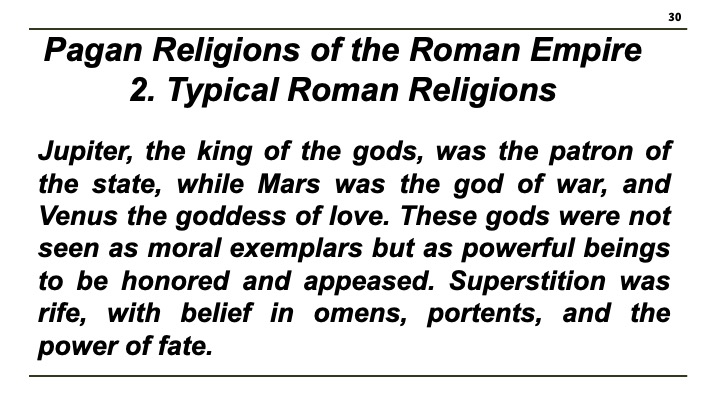

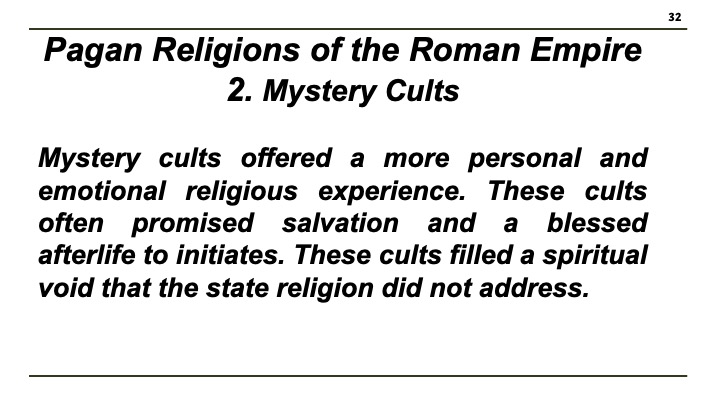
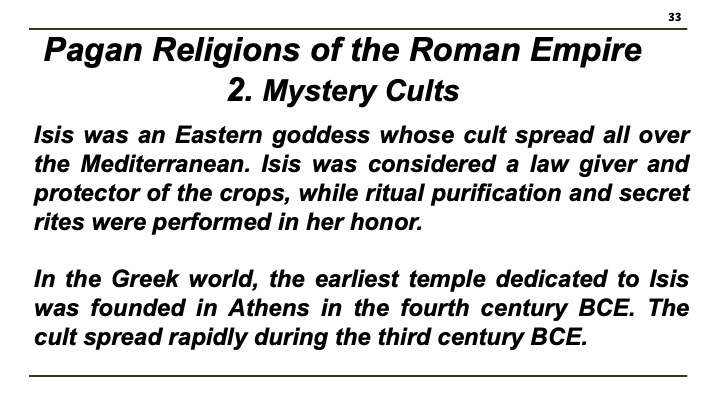
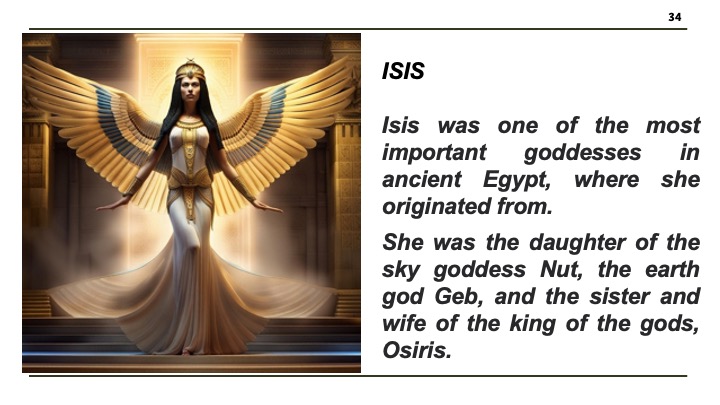
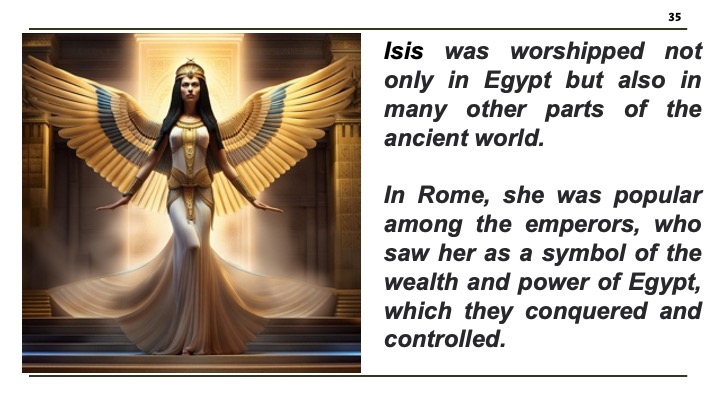
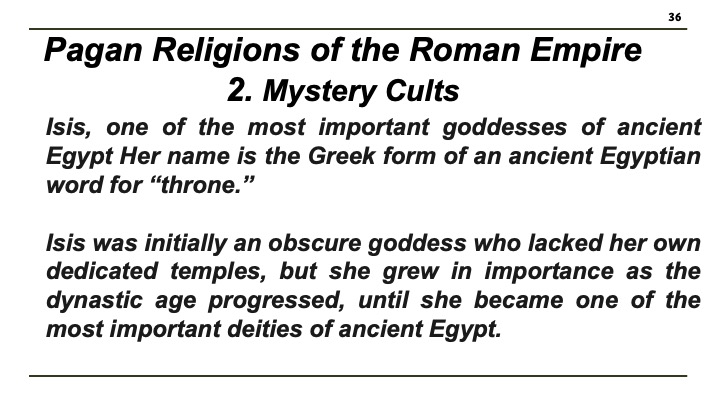
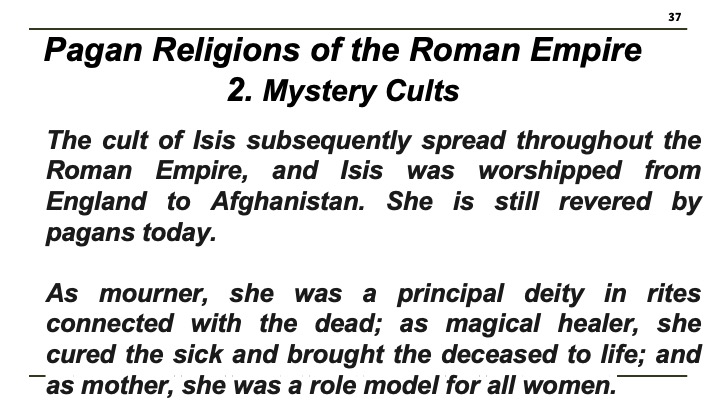
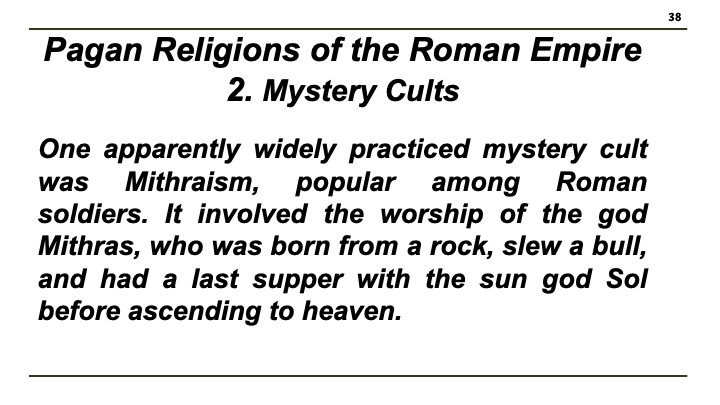
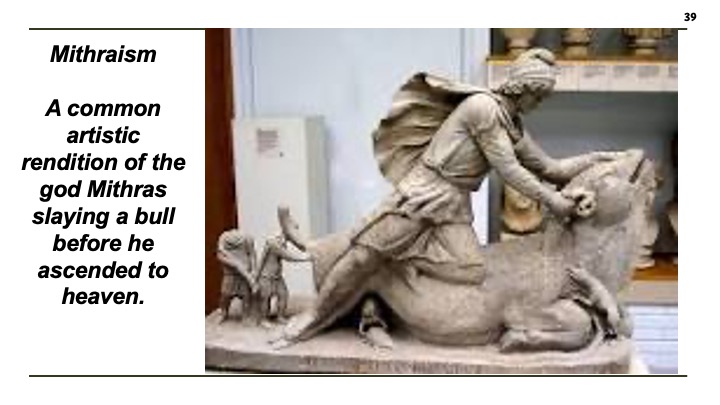
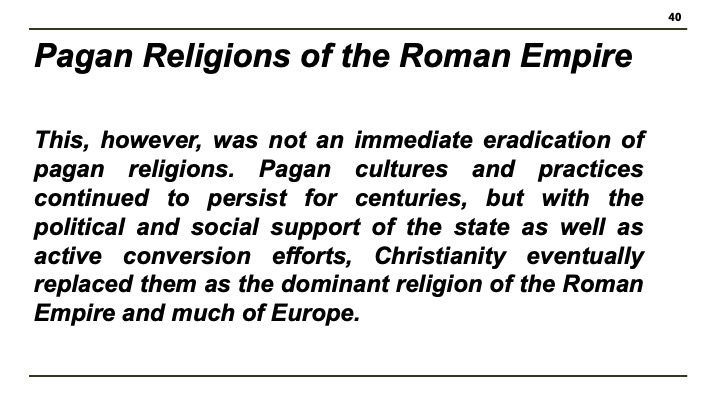
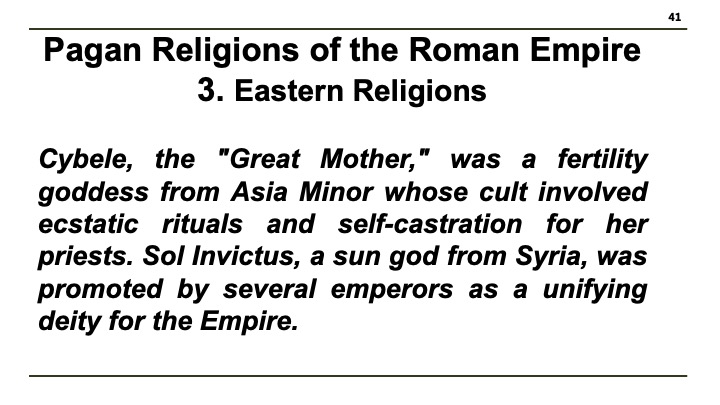
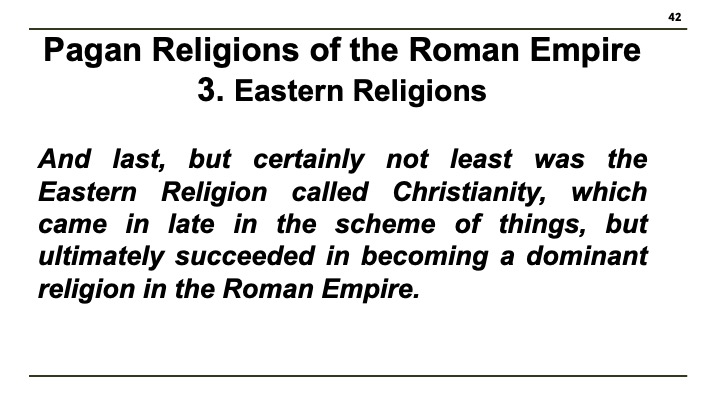
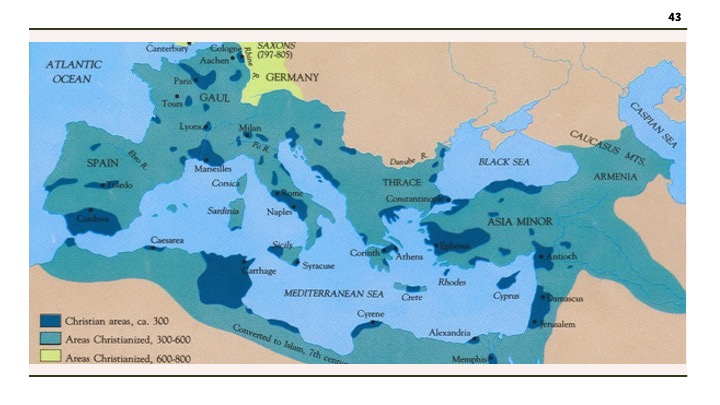
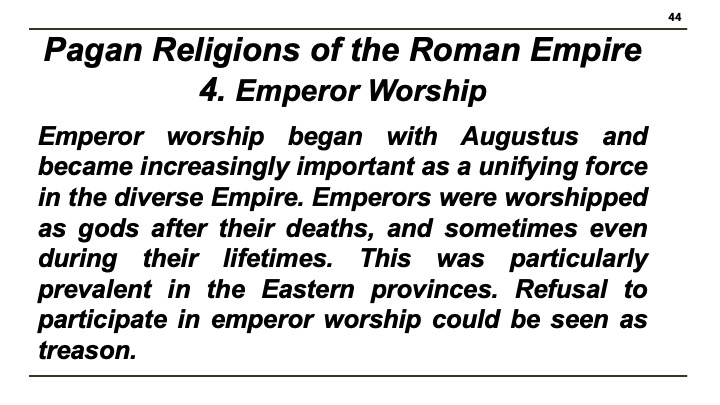
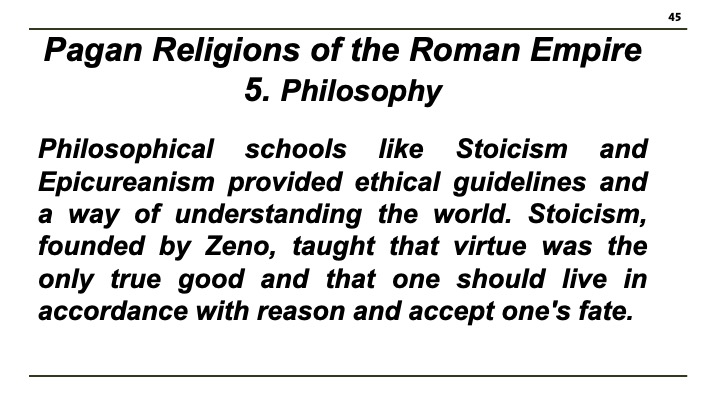
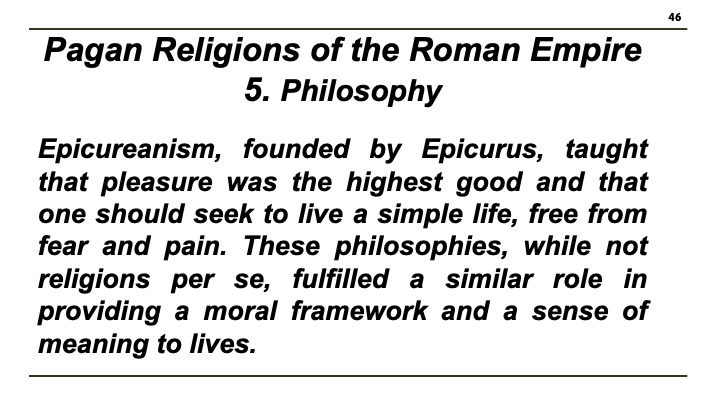
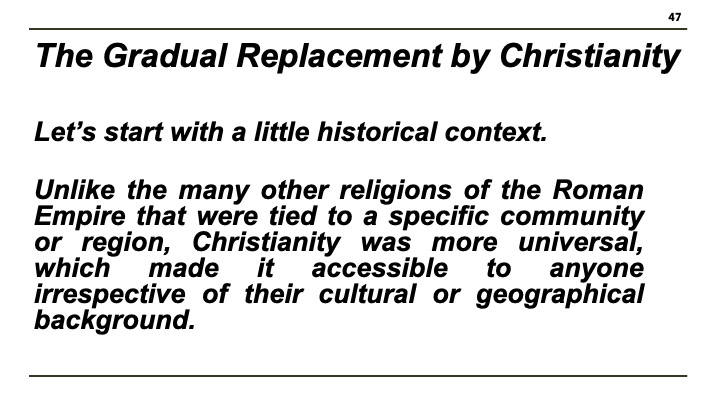
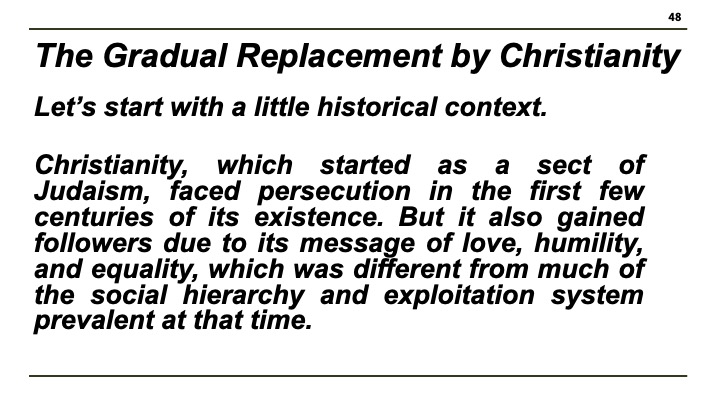
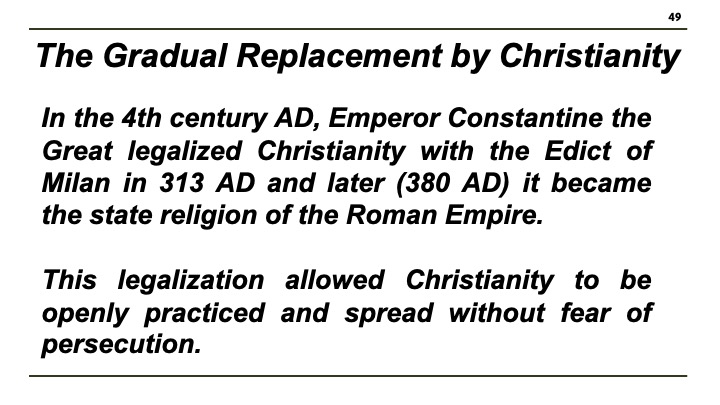
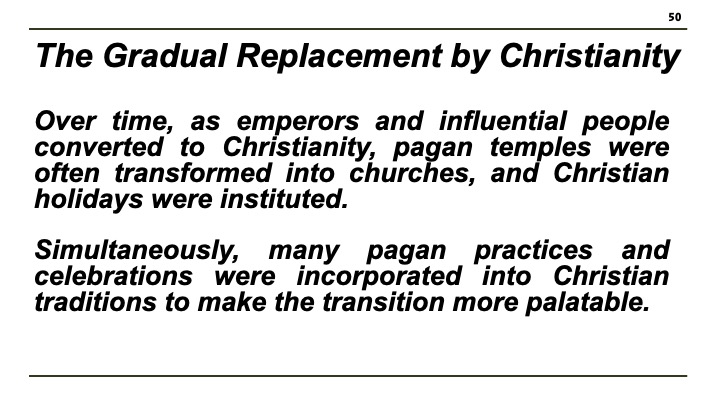
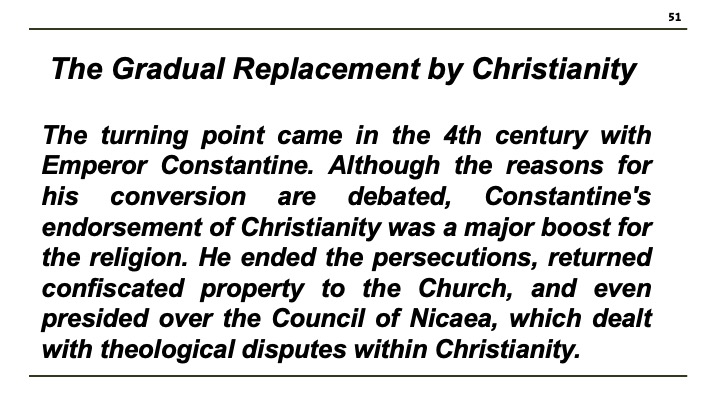
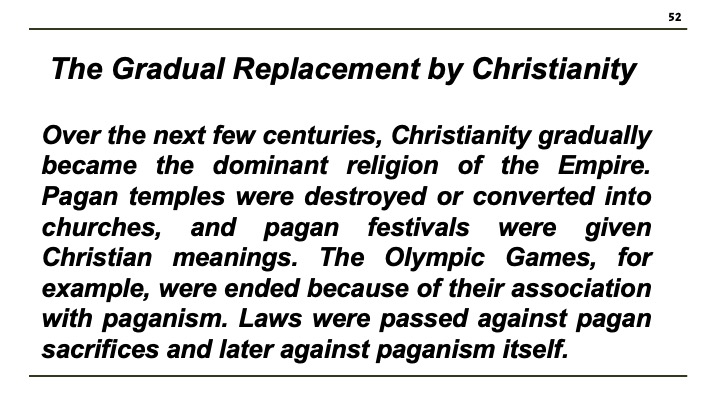
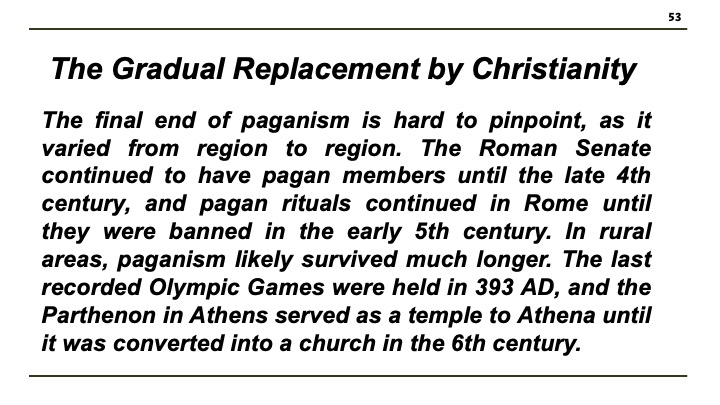
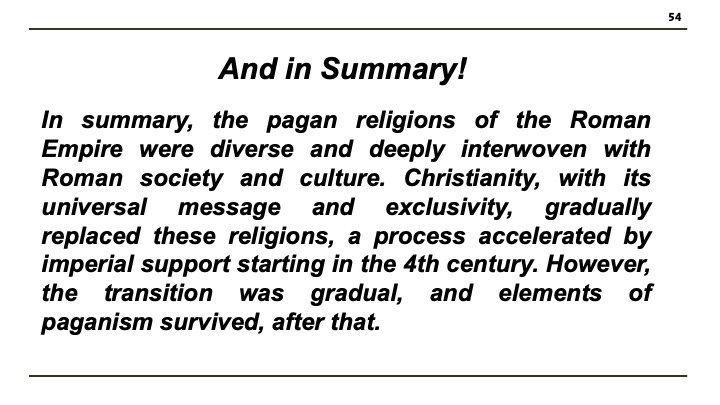
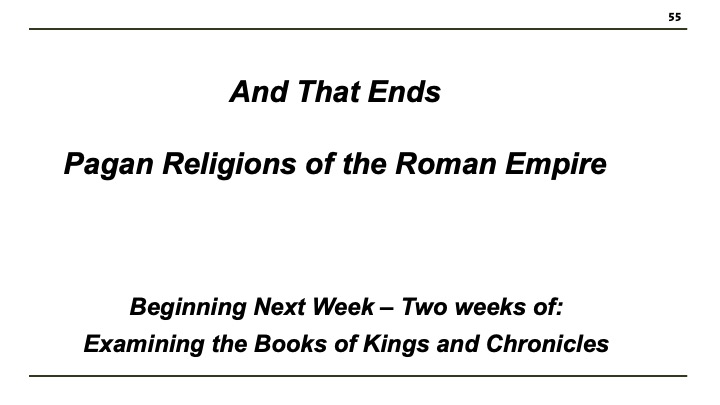
Links
<< Home >>
Pagan Religions of the Roman Empire - The Text
The Pagan Religions of the Roman Empire
Before and During Christianity
Let us begin this study by talking about just how religious the Roman Empire was.
I am going to try to convince you that in some ways, of all the major empires of biblical times, the Roman Empire was the MOST religious of all the major empires that made up the geographies of biblical times.
And convincing you will require that we review not only the pagan religions, but key parts of the history of the Roman empire, key aspects of the nature of that empire, key aspects regarding the growth of Christianity with that Empire, and key aspects of many of the surrounding religious cultures that the Roman empire engulfed during its growth.
Religion in ancient Rome consisted of a staggering number of imperial religious practices, which were followed both by the people of Rome as well as those who were brought under its rule.
The Romans thought of themselves as highly religious, and attributed their success as a world power to their collective piety in maintaining good relations with the gods. Their polytheistic religion is known for having honored many deities.
Key Dates & Events in the Empire
- 753 BC: Traditional founding date of Rome by Romulus
- 509 BC: Establishment of the Roman Republic after overthrowing the monarchy
- 264-241 BC: First Punic War - Rome defeats Carthage and gains Sicily
- 218-202 BC: Second Punic War - Hannibal invades Italy but is eventually defeated
- 149-146 BC: Third Punic War - Carthage destroyed, Rome gains territories in Africa
- 45 BC: Julius Caesar becomes dictator, initiating the fall of the Republic
- 27 BC: Augustus, the first Roman emperor
- 98-117 AD: Trajan expands empire to its greatest territorial extent
- 285 AD: Empire split into Western and Eastern sections under Diocletian
- 312 AD Constantine’s Edict of Milan
- 380 AD: Christianity becomes the official state religion under Theodosius I
- 410 AD: Visigoths sack Rome
- 476 AD: Last Western Roman emperor deposed, marking the fall of the Western empire
- 1453 AD: Constantinople falls, ending the Eastern Roman (Byzantine) Empire
This map shows the Roman Empire at themaximum extent in the year 117 AD
And the following map is an interesting overlay of the Roman Empire over the continental US.
Pagan Religions of the Roman Empire
Reasons For the Fall
- Overexpansion and military overspending
- Government corruption and political instability
- Invasions by barbarian tribes
- Splitting of the empire into two halves
Growing into one of the largest empires in human history is an incredible achievement. The Roman Kingdom, then the Republic, and then the Empire, gained this status through more than a thousand years of expansion, conquest, trade, and internal development. Eventually the Empire became so large that the government had difficulty ruling and protecting its vast territory. Many tribes were moving into Roman lands and could not be stopped due to weakening Roman leadership and political instability.
In 286 CE, Emperor Diocletian decided to divide Rome into two sections to try and stabilize the empire. For a hundred years Rome experienced even more divisions until the empire was finally divided in 395 CE and became the Western Empire and the Eastern Empire.
The Western Empire suffered from multiple invasions by barbarian tribes and eventually collapsed in 476 CE.
The Eastern Empire, also known as the Byzantine Empire, survived for almost 1,000 more years before being overtaken by the Ottoman Empire in 1453.
Pagan Religions of the Roman Empire
Now what we covered is simply a brief historical recanting of what happened. We will delve a little deeper into all of that as we progress.
But I would like to now begin our plunge into what were these Pagan Religions of the Roman Empire.
Traditional Roman Religions
The traditional Roman religion was deeply intertwined with the state and civic life. Festivals, rituals, and sacrifices were often public events that reinforced social bonds and hierarchy. The pantheon of gods was extensive, with deities for virtually every aspect of life. Jupiter, the king of the gods, was the patron of the state, while Mars was the god of war, and Venus the goddess of love.
The Roman Pagan Gods
Too Many to Count
Todays Categories
- Household Gods
- Typical Roman Religions
- Mystery Cults
- The Eastern Religions
- Emperor Worship
- Philosophy
Pagan Religions of the Roman Empire
1. The Gods of the Household
One of the remarkable aspects of religious life in the Roman Empire was the strong emphasis on the ever present gods present in the houses of individuals.
And they were very proud of this! They bragged about it.
The Roman house in many respects was like a temple, inasmuch as many gods dwelled within. As the Roman politician Cicero put it:
“What is holier, what is more fortified by every aspect of religion than the house of each and every citizen?
Cicero continues: “Here are their altars, here their hearths, here their household gods. Their sacred objects, their family’s rituals and religious ceremonies are all held here. The house is thus a safe refuge for each individual, from which asylum it is religiously lawful to tear no one.”
The center of the ancient house, including a Roman house, was the hearth, where the meals were cooked. Vesta was the goddess of the hearth, but the Romans also had gods of the cupboard and supplies, the Penates, which were often kept in cupboards near the hearth.
In addition to these private Penates, there existed public Penates for the state. Vesta, who was adored at every private hearth, likewise had a temple as well as priestesses who cared for the public hearth. The state had many counterparts to the forms of private worship in typical Roman households.
Another set of important deities were the Lares. The guardian of a house was the Lar Familiaris, or “Lar of the Household,” who generally stood by the entrance and served as a deity who received greetings before every departure from the house as well as at every return to it.
Like the Penates, the Lares were classified as either public or domestic and private. Public Lares were worshipped at crossroads, and the cult of these gods was important for slaves as well as for later imperial religion, when the worship of the Lares was reorganized by the emperor Augustus.
These deities, without shape or personality, represent what to us are mere functions but, on reflection, what must have served to populate the world with countless divine forces.
And objects within the house were sacred, too.
In addition to the cupboards for the Penates and the lararium for the Lares and other personal gods, the table where the family ate was sacred. And the marriage bed, was also sacred too.
Pagan Religions of the Roman Empire 2. Typical Roman Religions
The traditional Roman religion was deeply intertwined with the state and civic life. Festivals, rituals, and sacrifices were often public events that reinforced social bonds and hierarchy. The pantheon of gods was extensive, with deities for virtually every aspect of life.
Jupiter, the king of the gods, was the patron of the state, while Mars was the god of war, and Venus the goddess of love. These gods were not seen as moral exemplars but as powerful beings to be honored and appeased. Superstition was rife, with belief in omens, portents, and the power of fate.
Pagan Religions of the Roman Empire
3. Mystery Cults
When we come to the Mystery Cults, things can get confusing because there is so little written material about their beliefs and practices. Most of our information comes from archeological finds, which have been extensive.
Mystery cults offered a more personal and emotional religious experience. These cults often promised salvation and a blessed afterlife to initiates. These cults filled a spiritual void that the state religion did not address.
Isis was an Eastern goddess whose cult spread all over the Mediterranean. Isis was considered a law giver and protector of the crops, while ritual purification and secret rites were performed in her honor.
In the Greek world, the earliest temple dedicated to Isis was founded in Athens in the fourth century BCE. The cult spread rapidly during the third century BCE.
Isis was one of the most important goddesses in ancient Egypt, where she originated from. She was the daughter of the sky goddess Nut, the earth god Geb, and the sister and wife of the king of the gods, Osiris.
Isis was worshipped not only in Egypt but also in many other parts of the ancient world. In Rome, she was popular among the emperors, who saw her as a symbol of the wealth and power of Egypt, which they conquered and controlled.
Isis, one of the most important goddesses of ancient Egypt Her name is the Greek form of an ancient Egyptian word for “throne.”
Isis was initially an obscure goddess who lacked her own dedicated temples, but she grew in importance as the dynastic age progressed, until she became one of the most important deities of ancient Egypt.
The cult of Isis subsequently spread throughout the Roman Empire, and Isis was worshipped from England to Afghanistan. She is still revered by pagans today.
As mourner, she was a principal deity in rites connected with the dead; as magical healer, she cured the sick and brought the deceased to life; and as mother, she was a role model for all women.
One apparently widely practiced mystery cult was Mithraism, popular among Roman soldiers. It involved the worship of the god Mithras, who was born from a rock, slew a bull, and had a last supper with the sun god Sol before ascending to heaven.
Pagan Religions of the Roman Empire. 3. Eastern Religions
Cybele, the "Great Mother," was a fertility goddess from Asia Minor whose cult involved ecstatic rituals and self-castration for her priests. Sol Invictus, a sun god from Syria, was promoted by several emperors as a unifying deity for the Empire.
And last, but certainly not least was the Eastern Religion called Christianity, which came in late in the scheme of things, but ultimately succeeded in becoming a dominant religion in the Roman Empire.
Pagan Religions of the Roman Empire 4. Emperor Worship
Emperor worship began with Augustus and became increasingly important as a unifying force in the diverse Empire. Emperors were worshipped as gods after their deaths, and sometimes even during their lifetimes. This was particularly prevalent in the Eastern provinces. Refusal to participate in emperor worship could be seen as treason.
Pagan Religions of the Roman Empire 5. Philosophy
Philosophical schools like Stoicism and Epicureanism provided ethical guidelines and a way of understanding the world. Stoicism, founded by Zeno, taught that virtue was the only true good and that one should live in accordance with reason and accept one's fate.
Epicureanism, founded by Epicurus, taught that pleasure was the highest good and that one should seek to live a simple life, free from fear and pain. These philosophies, while not religions per se, fulfilled a similar role in providing a moral framework and a sense of meaning to lives.
The Gradual Replacement by Christianity
Let’s start with a little historical context.
Unlike the many other religions of the Roman Empire that were tied to a specific community or region, Christianity was more universal, which made it accessible to anyone irrespective of their cultural or geographical background.
Christianity, which started as a sect of Judaism, faced persecution in the first few centuries of its existence. But it also gained followers due to its message of love, humility, and equality, which was different from much of the social hierarchy and exploitation system prevalent at that time.
In the 4th century AD, Emperor Constantine the Great legalized Christianity with the Edict of Milan in 313 AD and later (380 AD) it became the state religion of the Roman Empire.
This legalization allowed Christianity to be openly practiced and spread without fear of persecution.
Over time, as emperors and influential people converted to Christianity, pagan temples were often transformed into churches, and Christian holidays were instituted.
Simultaneously, many pagan practices and celebrations were incorporated into Christian traditions to make the transition more palatable.
The turning point came in the 4th century with Emperor Constantine. Although the reasons for his conversion are debated, Constantine's endorsement of Christianity was a major boost for the religion. He ended the persecutions, returned confiscated property to the Church, and even presided over the Council of Nicaea, which dealt with theological disputes within Christianity.
Over the next few centuries, Christianity gradually became the dominant religion of the Empire. Pagan temples were destroyed or converted into churches, and pagan festivals were given Christian meanings. The Olympic Games, for example, were ended because of their association with paganism. Laws were passed against pagan sacrifices and later against paganism itself.
The final end of paganism is hard to pinpoint, as it varied from region to region. The Roman Senate continued to have pagan members until the late 4th century, and pagan rituals continued in Rome until they were banned in the early 5th century. In rural areas, paganism likely survived much longer. The last recorded Olympic Games were held in 393 AD, and the Parthenon in Athens served as a temple to Athena until it was converted into a church in the 6th century.
And in Summary!
In summary, the pagan religions of the Roman Empire were diverse and deeply interwoven with Roman society and culture. Christianity, with its universal message and exclusivity, gradually replaced these religions, a process accelerated by imperial support starting in the 4th century. However, the transition was gradual, and elements of paganism survived, after that.
And That Ends
Pagan Religions of the Roman Empire